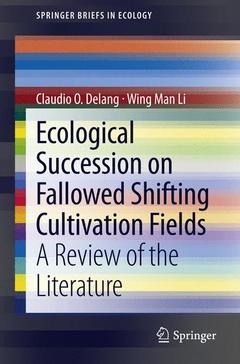Ecological Succession on Fallowed Shifting Cultivation Fields, 2013 A Review of the Literature SpringerBriefs in Ecology Series
Auteurs : Delang Claudio O., Li Wing Man

1. Introduction
2. Forest structure
2.1. Introduction
2.2. Total aboveground biomass
2.3. Trees and herbs abundance
2.4. Total basal area
2.5. Canopy height
2.6. Plant density
2.7. Discussion and conclusions
3. Species richness and diversity
3.1. Introduction
3.2. Total species richness
3.3. Tree and herb species richness
3.4. Total species diversity
3.5. Discussion and conclusions
4. Species composition
4.1. Introduction
4.2. Succession from grasses to trees
4.3. Fallow length and species composition
4.4. Discussion and conclusions
5. Factors contributing to differences in forest recovery rates
5.1. Introduction
5.2. Number of times the field was burned
5.3. Length of fallow period
5.4. Type of soil
5.5. Type of forest
5.6. Discussion and conclusions
6. Conclusions
It provides a comprehensive literature review of the ecological succession in fallowed swiddens (in tropical countries),
something that is lacking at present
Includes supplementary material: sn.pub/extras
Date de parution : 12-2012
Ouvrage de 127 p.
15.5x23.5 cm
Disponible chez l'éditeur (délai d'approvisionnement : 15 jours).
Prix indicatif 52,74 €
Ajouter au panier


